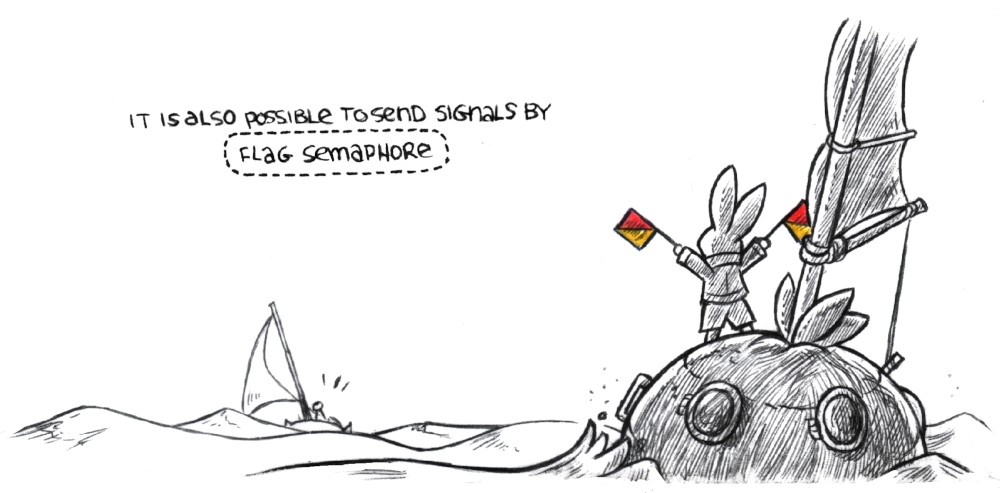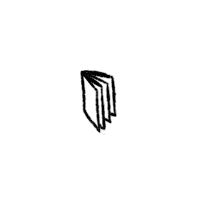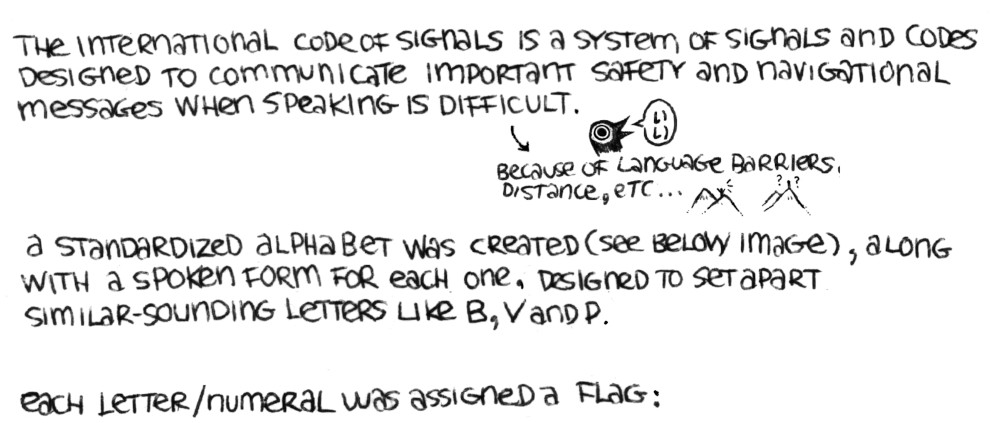
The International Code of Signals is a system of signals and codes designed to communicate important safety and navigational messages when speaking is difficult (because of language barriers, distance, etc). A standardized alphabet was created (see below image), along with a spoken word form for each one, designed to set apart similar-sounding letters like B, V and D. Each letter/numeral was assigned a flag:
Phonetic Alphabet
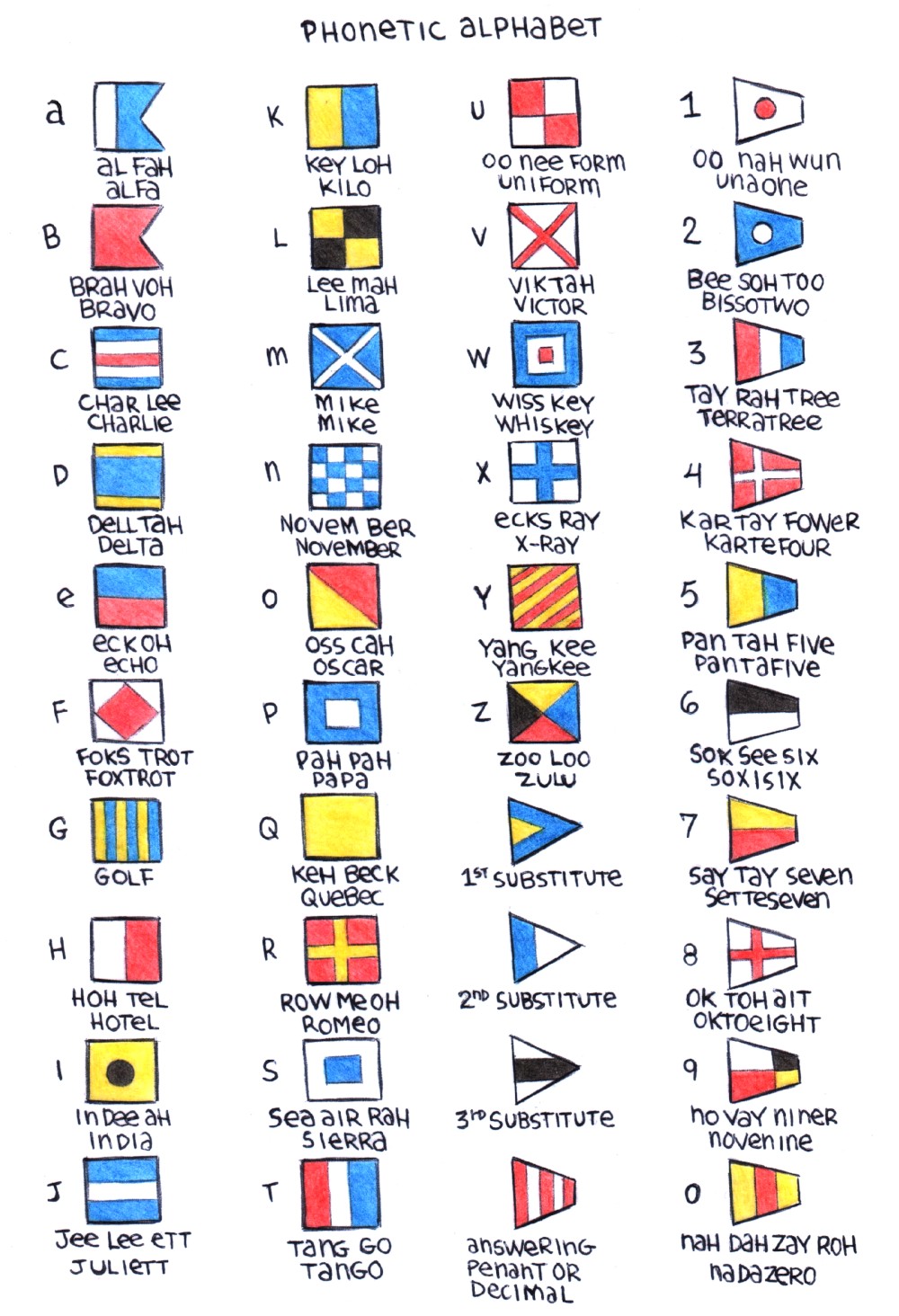
Alfa : [ˈal.fa] Al fah, Bravo : [ˈbrɑː.voʊ] Brah voh, Charlie : [ˈtʃɑː.li] Char Lee, Delta : [ˈdɛl.tə] Dell tah, Echo : [ˈɛk.oʊ] Eck oh, Foxtrot : [ˈfɔks.trɔt] Foks trot, Golf: [gɔlf], Hotel : [hoʊˈtɛl] Hoh tel, India : [ˈɪn.dɪə] In dee ah, Juliet : [ˈdʒuː.ljɛt] Jee lee ett, Kilo : [ˈki.loʊ] Key loh, Lima : [ˈli.mə] Lee mah, Mike : [maɪk], November : [noʊˈvɛm.bə] Novem ber, Oscar : [ˈɔs.kə] Oss cah, Papa: [ˈpa.pə] Pah pah, Quebec : [kəˈbɛk] Keh Beck, Romeo : [ˈroʊ.mjoʊ] Row me oh, Sierra : [siˈɛrə] See air rah, Tango : [ˈtaŋ.goʊ] Tan go, Uniform : [ˈjuː.nɪ.fɔːm] Oo nee form, Victor : [ˈvɪk.tə] Vik tah, Whiskey : [ˈwɪs.ki] Wiss key, X-ray : [ˈɛks.reɪ] Ecks ray, Yankee : [ˈjaŋ.ki] Yang kee, Zulu : [ˈzuː.luː] Zoo loo, 1st substitute, 2nd substitute, 3rd substitute, Answering penant or decimal point, 1 : Unaone : [ˌuː.nəˈwʌn] Oo nah wun, 2 : Bissotwo : [ˌbɪs.oʊˈtuː] Bee soh too, 3 : Terratree : [ˌtɛr.əˈtri] Tay rah tree, 4 : Kartefour : [ˌkɑː.təˈfɔː.wə] Kar tay fower, 5 : Pantafive : [ˌpan.təˈfaɪf] Pan tah five, 6 : Soxisix : [ˌsɔk.siˈsɪks] Sok see six, 7 : Setteseven : [ˌsɛ.təˈsɛv.ən] Say tay seven, 8 : Oktoeight : [ˌɔk.toʊˈeɪt] Ok toh ait, 9 : Novenine : [ˌnoʊ.veˈnaɪ.nə] No vay niner, 0 : Nadazero : [ˌna.daˈzɪə.roʊ] Nah dah zay roh
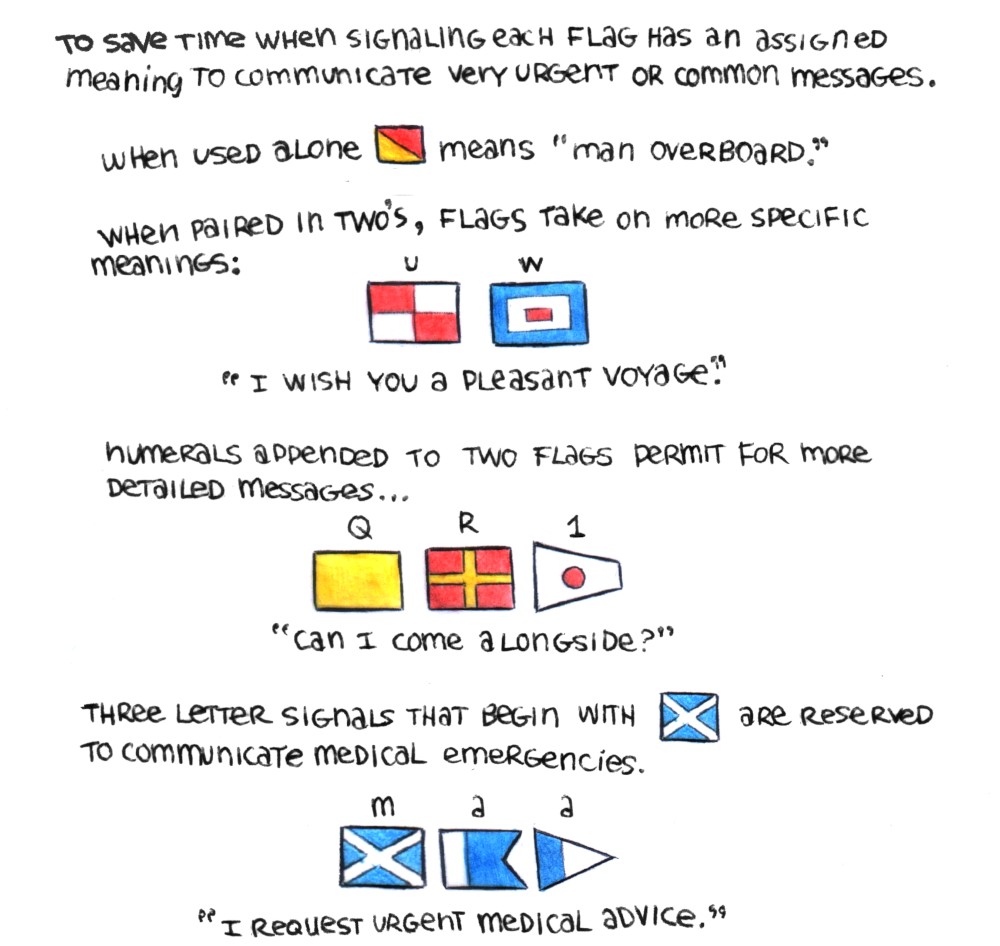
To save time when signaling, each flag has an assigned meaning to communicate very urgent or common messages. When used alone, the Oscar flag means "man overboard." When paired in twos, flags take on more specific meanings. For example, the Uniform and Whiskey flags used together in that order mean "I wish you a pleasant voyage." Numerals appended to two flags permit for more detailed messages, for example: The Quebec flag paired with the Romeo flags and the 1 number flag means "Can I come alongside?" Three letter signals that begin with Mike are reserved to communicate medical emergencies, for example: Mike followed by Alfa and then by a 2nd substitute flag is code for "I request urgent medical advice."
Substitute Flags
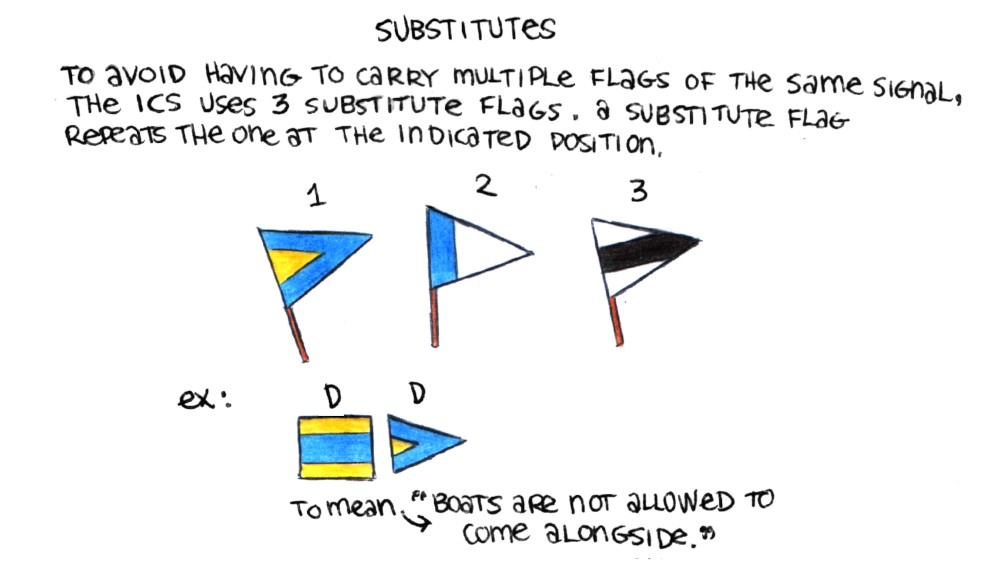
To avoid having to carry multiple flags of the same signal, the ICS(international code of signals) uses 3 substitute flags. A substitute flag repeats the one at the indicated position.
An example shows how to signal DD, or Delta followed by a subtitute 1 flag. DD means that "boats are not allowed to come alongside."
Day Shapes

When in distress, signal using the N and C flags.
Another visual way to communicate distress, say one is lacking signal flags, is to have a square flag above/below a ball shape (anything resembling a ball). This is known as a day shape.
Spelling
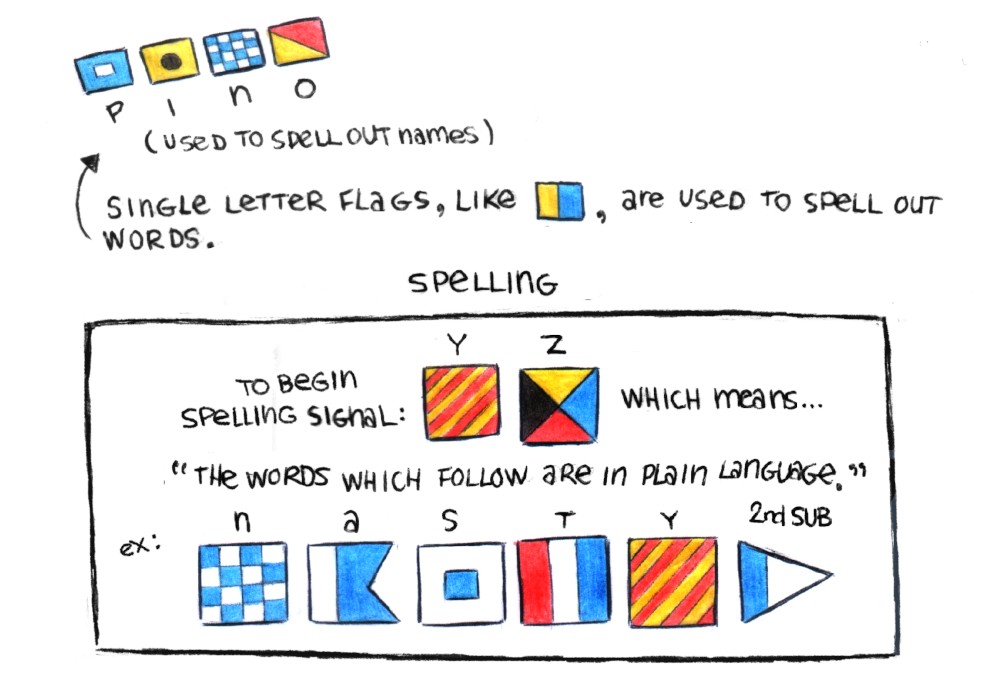
Single letter flags, like Kilo, are used to spell out words.
An example shows how to spell the boat named Pino, using the following flags: Papa, India, November and Oscar.
To begin spelling, hoist the Yankee and Zulu flags, which means, "The words which follow are in plain language." An example spells out the name Nastya using the following flags: November, Alpha, Sierra, Tango, Yankee and the 2nd substitute flag.
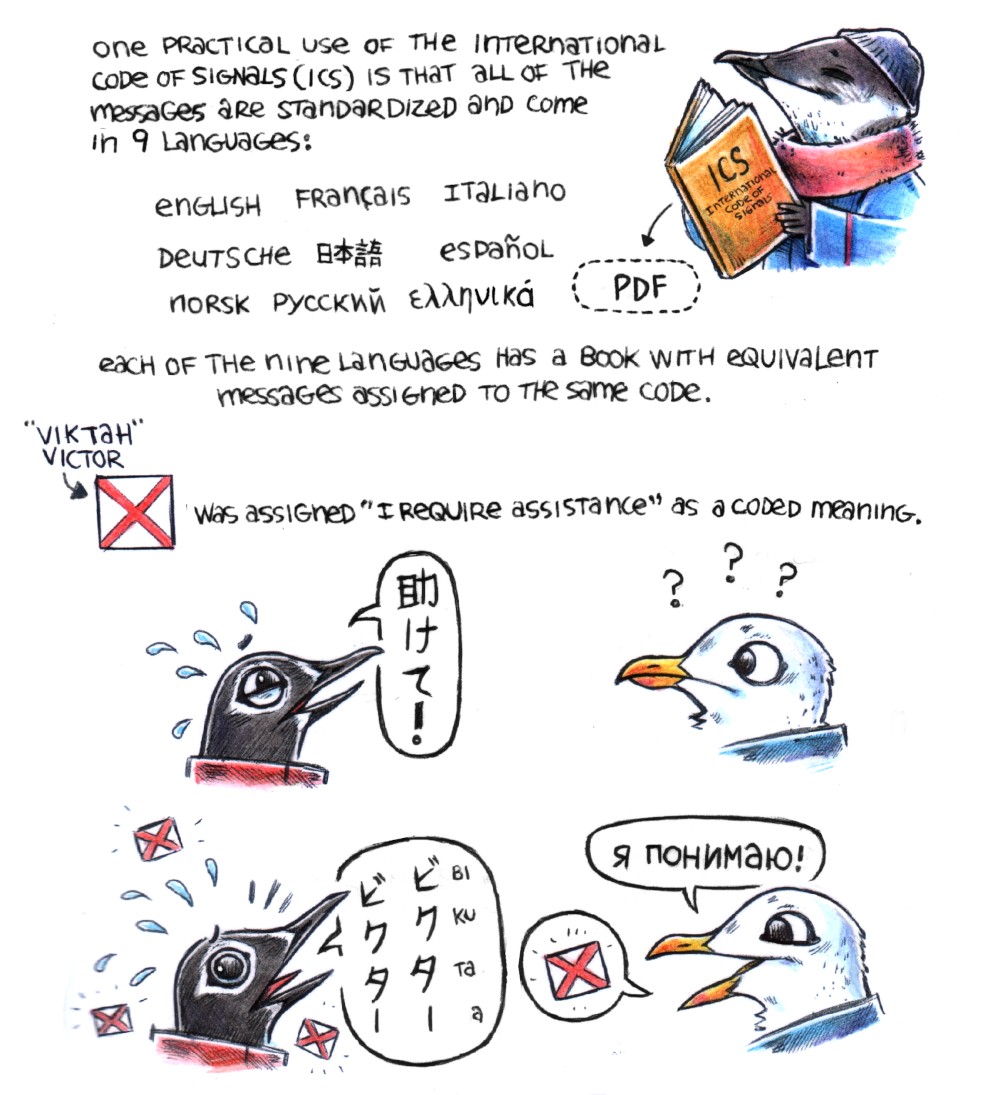
One practical use of the International Code of Signals(ICS) is that all of the messages are standardized and come in 9 languages: English, French, Italian, German, Japanese, Spanish, Norwegian, Russian and Greek. Each of the nine languages has a book with equivalent messages assigned to the same code.
The signal flag Victor was assigned "I require assistance" as a coded meaning.
How to communicate with another vessel using flags
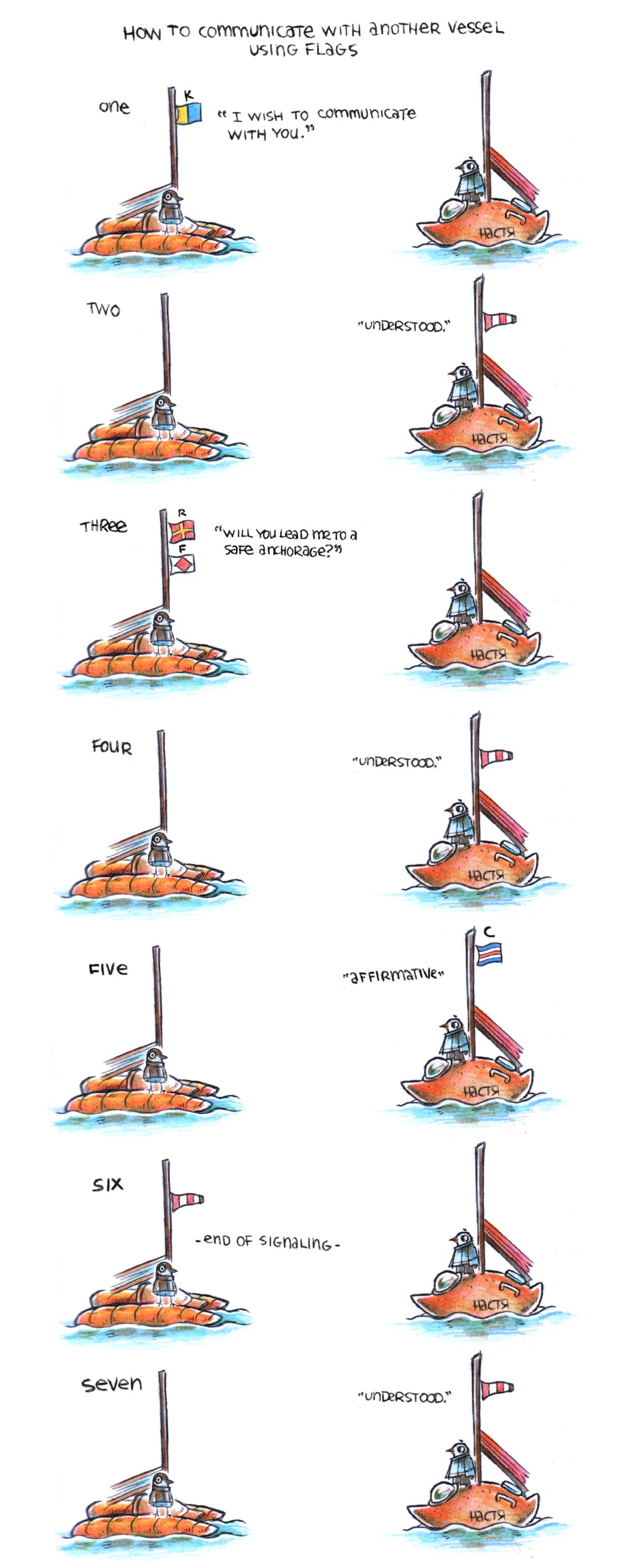
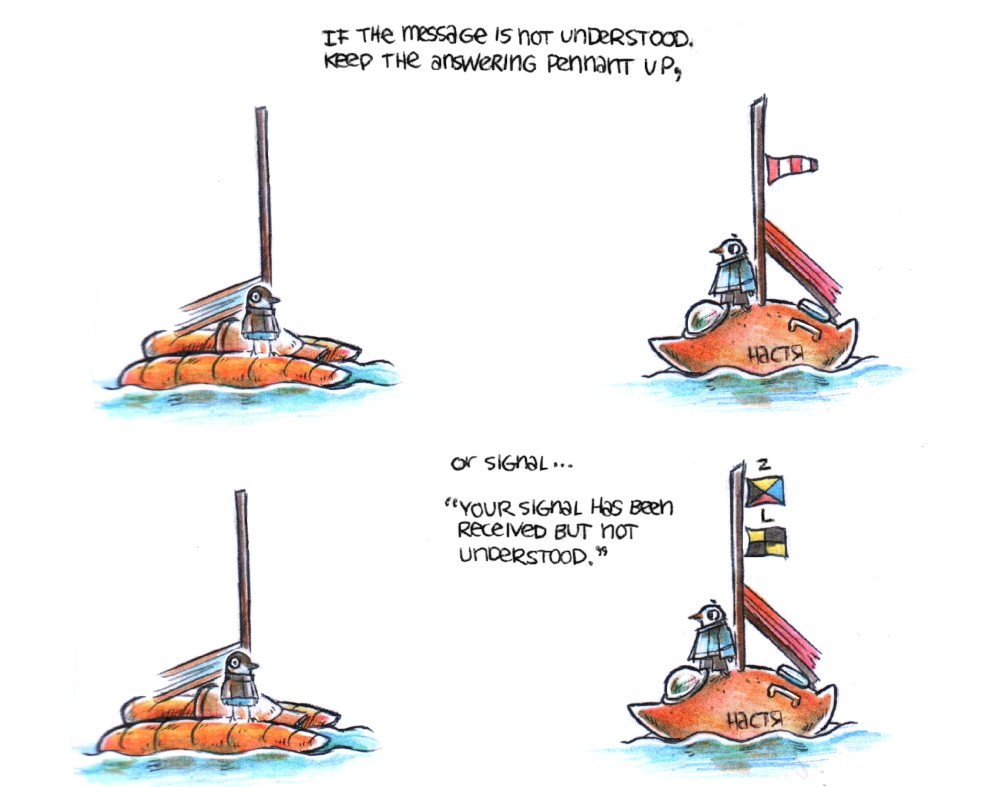
Zine
Download the zine version of this page.

How to fold a zine.

